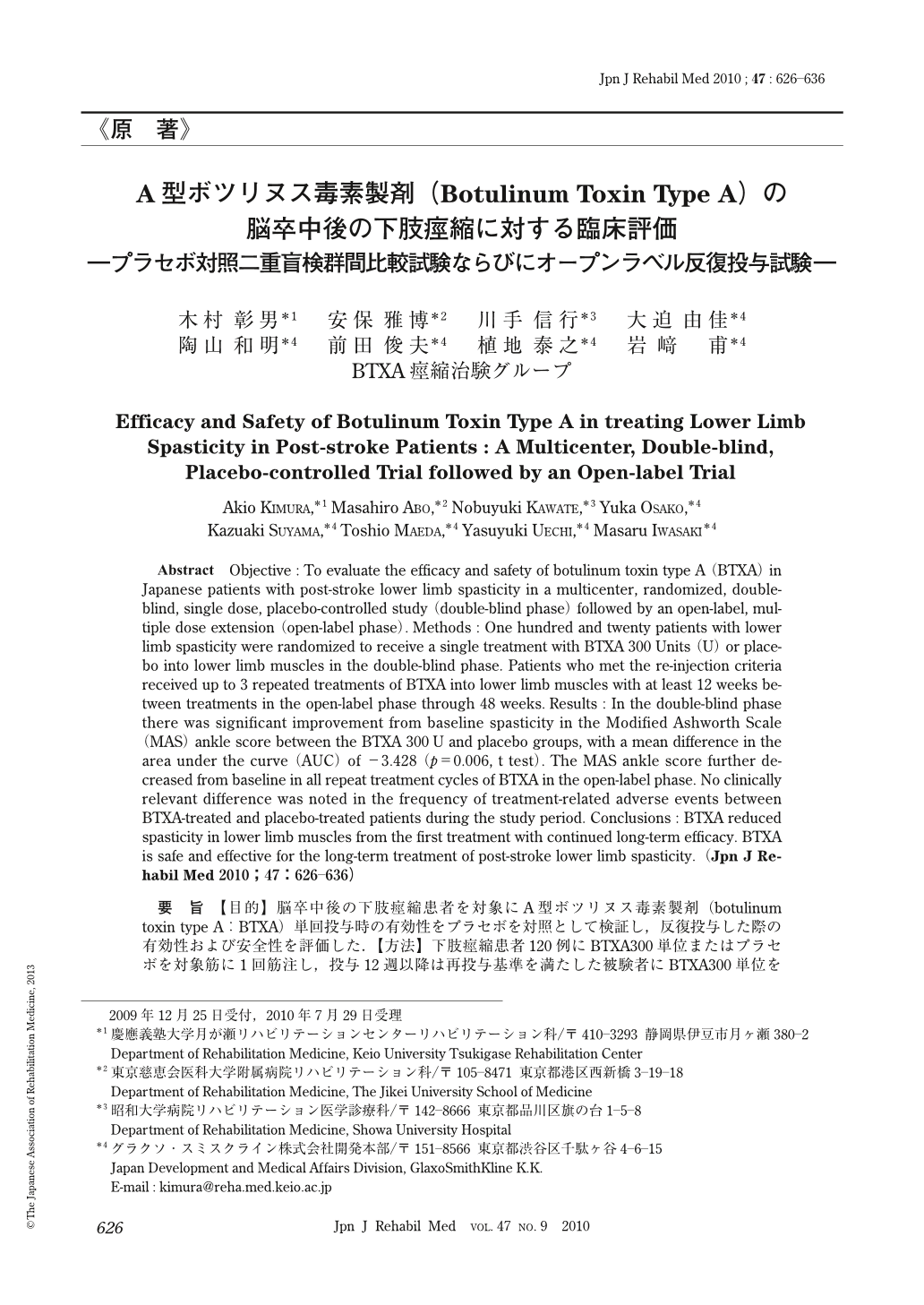Japanese
English
- 販売していません
- Abstract 文献概要
- 1ページ目 Look Inside
- 参考文献 Reference
要旨 【目的】脳卒中後の下肢痙縮患者を対象にA型ボツリヌス毒素製剤(botulinum toxin type A:BTXA)単回投与時の有効性をプラセボを対照として検証し,反復投与した際の有効性および安全性を評価した.【方法】下肢痙縮患者120例にBTXA300単位またはプラセボを対象筋に1回筋注し,投与12週以降は再投与基準を満たした被験者にBTXA300単位を最大3回反復投与し,48週まで観察を行った.【結果】足関節のModified Ashworth Scale(MAS)の投与前からの変化量に基づく曲線下面積の平均値の差は,BTXA群とプラセボ群間で-3.428であり,BTXA群で有意な減少が認められた(p=0.006,t検定).反復投与によりMASは更なる改善を示した.副作用発現頻度はBTXA群,プラセボ群間で著明な差は認められず,反復投与において副作用発現率の増加は認められなかった.【結論】BTXAは初回投与から下肢痙縮を改善し,長期的に有効で安全な治療法に成り得ると考えられた.
Abstract Objective : To evaluate the efficacy and safety of botulinum toxin type A (BTXA) in Japanese patients with post-stroke lower limb spasticity in a multicenter, randomized, double-blind, single dose, placebo-controlled study (double-blind phase) followed by an open-label, multiple dose extension (open-label phase). Methods : One hundred and twenty patients with lower limb spasticity were randomized to receive a single treatment with BTXA 300 Units (U) or placebo into lower limb muscles in the double-blind phase. Patients who met the re-injection criteria received up to 3 repeated treatments of BTXA into lower limb muscles with at least 12 weeks between treatments in the open-label phase through 48 weeks. Results : In the double-blind phase there was significant improvement from baseline spasticity in the Modified Ashworth Scale (MAS) ankle score between the BTXA 300U and placebo groups, with a mean difference in the area under the curve (AUC) of -3.428 (p=0.006, t test). The MAS ankle score further decreased from baseline in all repeat treatment cycles of BTXA in the open-label phase. No clinically relevant difference was noted in the frequency of treatment-related adverse events between BTXA-treated and placebo-treated patients during the study period. Conclusions : BTXA reduced spasticity in lower limb muscles from the first treatment with continued long-term efficacy. BTXA is safe and effective for the long-term treatment of post-stroke lower limb spasticity.

Copyright © 2010, The Japanese Association of Rehabilitation Medicine. All rights reserved.


